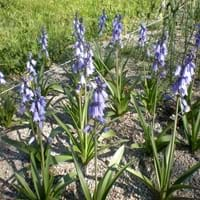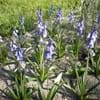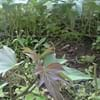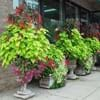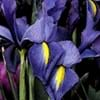Life Span
Perennial
Annual and Perennial
Type
Bulb or Corm or Tuber
Herbaceous Perennial, Herbs
Origin
Southern Europe, Western Europe, Northern Africa
Europe, Middle East
Types
Hyacinthoides flahaultiana, Hyacinthoides mauritanica, Hyacinthoides reverchonii
Mentha × piperita 'Candymint', Mentha × piperita 'Citrata', Mentha × piperita 'Crispa'
Habitat
Parks, wastelands, Waysides, Woodland edges
Wide range of ecological site
USDA Hardiness Zone
4-10
3-7
AHS Heat Zone
9-1
Not Available
Sunset Zone
21,22
Not Available
Habit
Clump-Forming
Clump-Forming
Flower Color
White, Blue, Pink, Blue Violet
Purple
Flower Color Modifier
Bicolor
Bicolor
Fruit Color
Not Available
Non Fruiting Plant
Leaf Color in Spring
Green
Dark Green
Leaf Color in Summer
Light Green
Green, Dark Green
Leaf Color in Fall
Several shades of Green
Dark Green, Green
Leaf Color in Winter
Light Green
Light Green
Leaf Shape
Narrow
Ovate elongated
Plant Season
Spring
Spring, Summer
Sunlight
Partial Sun, Partial shade
Full Sun, Partial Sun
The pH of Soil
Acidic, Neutral
Neutral, Slightly Acidic, Slightly Alkaline
Soil Drainage
Well drained
Well drained
Bloom Time
Spring, Late Spring
Late Summer, Mid Summer
Tolerances
Drought
Drought
Where to Plant?
Ground
Container, Ground
How to Plant?
By dividing rhizomes, tubers, From bulbs, Seedlings
From Rhizomes, Vegetative Reproduction
Plant Maintenance
Medium
Low
Watering Requirements
Average Water Needs, Do Not over Water, Requires regular watering
Requires plenty of water during the growing season
In Summer
Lots of watering
Lots of watering
In Spring
Moderate
Moderate
In Winter
Average Water
Less Watering
Soil pH
Acidic, Neutral
Neutral, Slightly Acidic, Slightly Alkaline
Soil Drainage Capacity
Well drained
Well drained
Sun Exposure
Partial Sun, Partial shade
Partial Sun
Pruning
Pinch Tips, Remove damaged leaves, Remove dead branches, Remove dead leaves, Remove dead or diseased plant parts
Remove damaged leaves, Remove dead branches, Remove dead leaves, Requires very little pruning
Fertilizers
High amounts of nutrients, organic fertlizers
All-Purpose Liquid Fertilizer
Pests and Diseases
Red blotch
Red blotch
Plant Tolerance
Drought
Drought
Flower Petal Number
Single
Double
Fragrant Bark/Stem
No
Yes
Foliage Texture
Medium
Coarse
Foliage Sheen
Glossy
Matte
Attracts
Birds, Butterflies, pollinators
Bees
Allergy
Pollen
flushing of face, Headache, Heartburn, Sore Throat
Aesthetic Uses
Showy Purposes
Not Used For Aesthetic Purpose
Beauty Benefits
Not Available
Maintains teeth healthy
Environmental Uses
Air purification
Prevent Soil Erosion
Medicinal Uses
Not Available
Mouth Sores, Pain killer, Vitamin A
Part of Plant Used
Flowers
Flowers, Leaves
Other Uses
Beneficial species for attracting pollinators, Decoration Purposes, Showy Purposes, Used for Landscaping
In toothpaste, Mouth freshner, Used in flavouring curries, teas, used in Indian cuisine in curries
Used As Indoor Plant
No
Yes
Used As Outdoor Plant
Yes
Yes
Garden Design
Container, Cutflower, Mixed Border, Rock Garden / Wall, Wildflower
Herb
Botanical Name
HYACINTHOIDES hispanica
Mentha × piperita
Common Name
Spanish Bluebell
Peppermint
In Hindi
Bluebell plant
पिपरमिंट
In German
Endymion Pflanze
Pfefferminze
In French
plante Bluebell
Menthe poivrée
In Spanish
planta Bluebell
Mentha × piperita
In Greek
φυτό Bluebell
Μέντα
In Portuguese
planta Bluebell
Hortelã-pimenta
In Polish
Bluebell roślin
Mięta pieprzowa
In Latin
Bluebell herba
Peppermint
Phylum
Magnoliophyta
Magnoliophyta
Class
Liliopsida
Magnoliopsida
Family
Liliaceae
Lamiaceae
Genus
Hyacinthoides
Mentha
Clade
Angiosperms, Monocots
Angiosperms, Asterids, Eudicots
Tribe
Hyacintheae
Mentheae
Subfamily
Scilloideae
Not Available
Importance of Bluebell and Peppermint
Want to have the most appropriate plant for your garden? You might want to know the importance of Bluebell and Peppermint. Basically, these two plants vary in many aspects. Compare Bluebell and Peppermint as they differ in many characteristics such as their life, care, benefits, facts, etc. Every gardener must at least have the slightest clue about the plants he wants to plant in his garden. Compare their benefits, which differ in many ways like facts and uses. The medicinal use of Bluebell is Not Available whereas of Peppermint is Mouth Sores, Pain killer and Vitamin A. Bluebell has beauty benefits as follows: Not Available while Peppermint has beauty benefits as follows: Not Available.
Compare Facts of Bluebell vs Peppermint
How to choose the best garden plant for your garden depending upon its facts? Here garden plant comparison will help you to solve this query. Compare the facts of Bluebell vs Peppermint and know which one to choose. As garden plants have benefits and other uses, allergy is also a major drawback of plants for some people. Allergic reactions of Bluebell are Pollen whereas of Peppermint have flushing of face, Headache, Heartburn and Sore Throat respectively. Having a fruit bearing plant in your garden can be a plus point of your garden. Bluebell has no showy fruits and Peppermint has no showy fruits. Also Bluebell is flowering and Peppermint is flowering. You can compare Bluebell and Peppermint facts and facts of other plants too.
